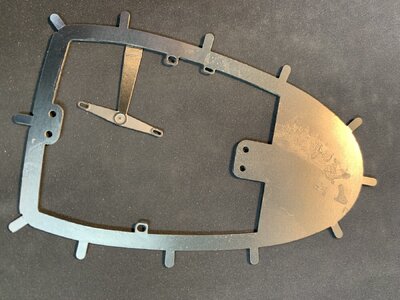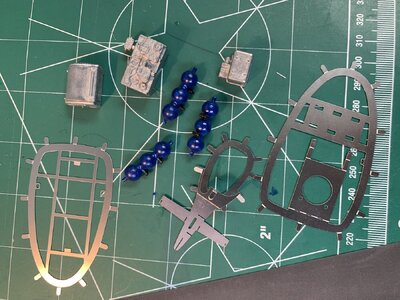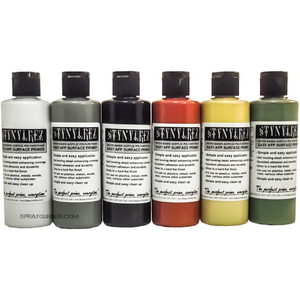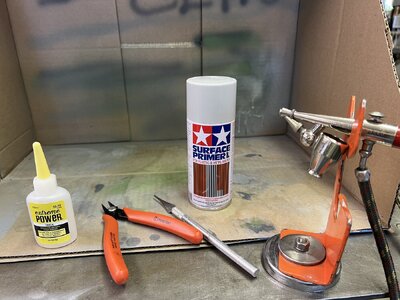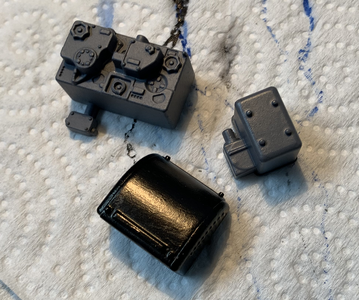K. I've never become proficient with an airbrush since the last time I had the equipment to try it was probably 30 years ago or though. I'm not sure what a "double-action" airbrush means! Please give advice as much as you have time for!
M.
I am also a learner, and I carefully give advice when it comes to painting.
Single-action airbrush is one where the trigger only operates one action - the air. When you press the trigger on a single action airbrush, the airflow is turned on and a pre-set amount of fluid will be sprayed. The amount of fluid is controlled by turning either a fluid tip or cone on
external mix airbrushes, or a preset knob or preset ring on the handle of
internal mix airbrushes. This can be turned with your other hand during spraying, or you may pause work to adjust the preset and then continue spraying when you have re-set it. Either of these methods of using the single-action preset is much more awkward than the instant control of a
dual-action airbrush. However, single-action is good for applications where you want long runs at a steady preset spray pattern and the preset prevents you from overshooting. The preset on a single-action works differently than the
preset handle that may come with or may be optionally added to a
dual-action airbrush. On a single-action airbrush, the preset knob pulls the needle in or out of the nozzle to vary the paint, whereas on a dual-action airbrush, the trigger controls the needle, and a
preset handle acts to limit the range.
A dual-action airbrush is one where one trigger controls two actions - the air and the fluid. The trigger is first pressed down for air and then pulled back for fluid. This is typically controlled with the forefinger. The downward movement opens the air valve and the backward movement pulls the needle back from the nozzle to allow fluid through. It is important to always press down for air first (and actually widely considered best practice to keep pressed down for air between a series of strokes too), so that the fluid is then always introduced to an existing airflow and atomized immediately. If you pull back for paint at the same time as pushing down for air, or before, then there is an opportunity for an amount of fluid to build up at the tip before being atomized and then this is projected out as an initial splatter as the air begins to flow. The ability to introduce the paint more gradually to avoid initial splatter is one of the advantages of a dual-action over a single-action airbrush.
The main advantage of dual-action is the instant control you have over the amount of paint and therefore the spray pattern, allowing you to go from a wide spray down to a fine line in one stroke (a 'dagger stroke') or vice versa, or even just switch quickly between fine lines or wide coverage on subsequent strokes without having to pause to change a preset like you would on a
single-action airbrush. The further you pull back on the trigger the more fluid is introduced. For fine lines or wide spray, the same applies to the volume of paint and distance from the surface as for a
single-action airbrush above, but a dual-action airbrush allows you to control both air and fluid actions with one continuous finger movement of one hand. Therefore dual-action airbrushes are favored greatly by any artistic applications that require more control and variance in spray pattern, such as art, crafts, model painting, cosmetics, etc. This is why almost all
Iwata airbrushes are dual-action and only a few are single-action.
Click here to view all of our dual-action airbrushes.
Here is a good article to start airbrushing
UK distributor of airbrushes, airbrush parts, airbrush supplies and compressors. Buy online Iwata, Paasche, Badger and Premi-Air airbrushes, Createx, Com-Art, Lifecolor and Wilder paints. Training courses, support and repair service.

airbrushes.com



